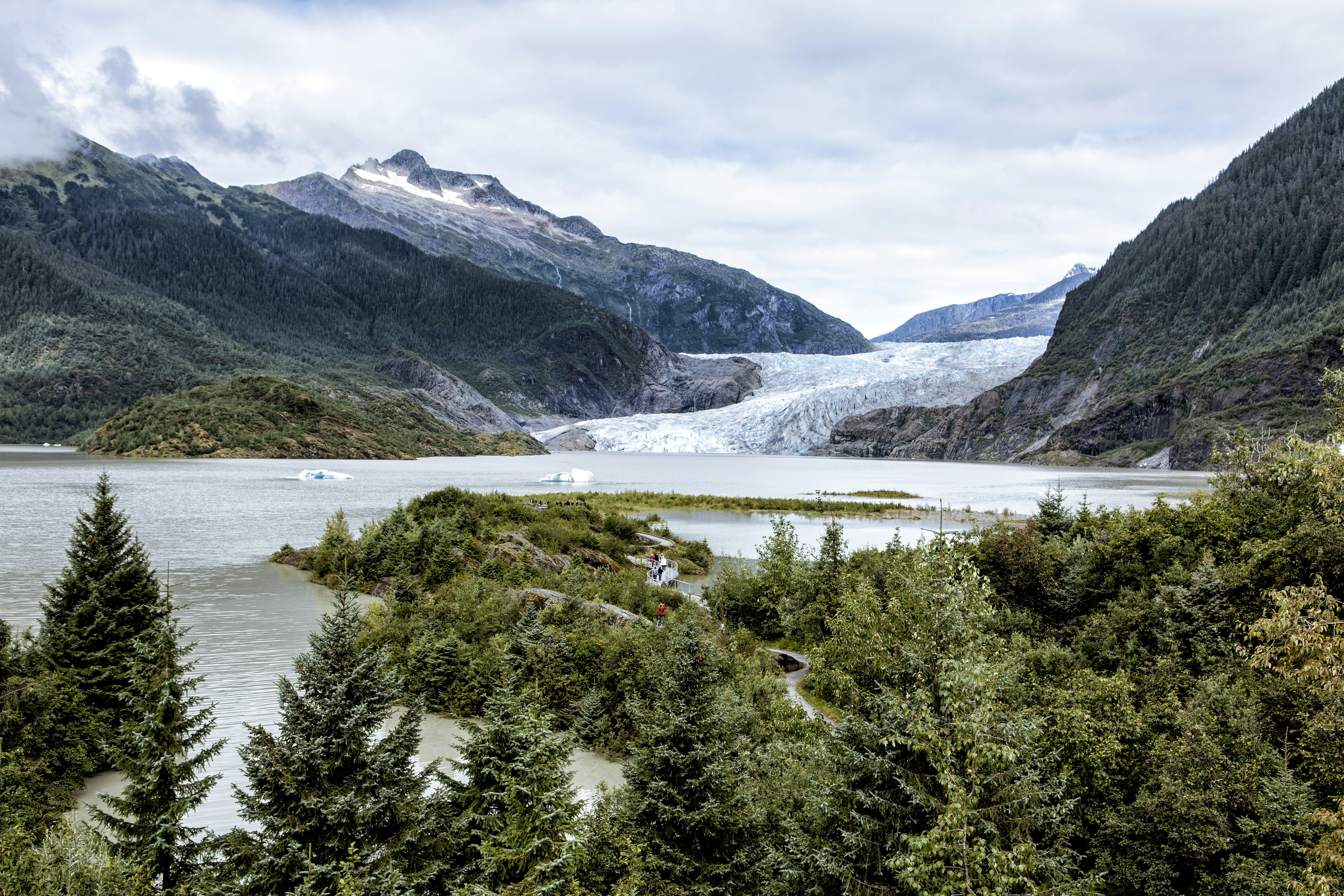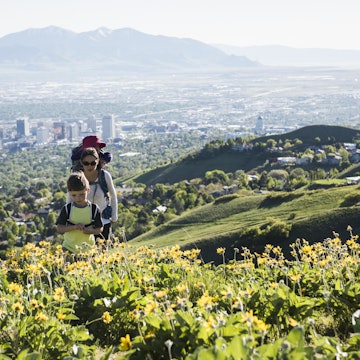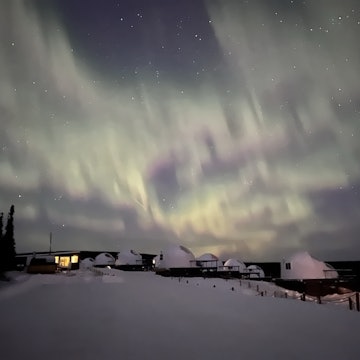

From casual strolls to strenuous scrambles and climbs, here's our guide to Alaska's best hiking trails © Getty Images/Mint Images RF
Perhaps no other US location has the diversity of Alaska when it comes to hiking.
From casual strolls to hardcore alpine scrambling, the state proves itself over and over again as a destination of choice for trekkers. Those seeking solitude should venture out of the main city centers and tackle trails not usually traveled by the casual Alaska visitor. Staff at one of four public lands information centers in Anchorage, Fairbanks, Tok, and Ketchikan can assist hiking enthusiasts with all the details related to trails, permits and safety, and provide insight into transportation to remote locations.
Many of Alaska’s trails are also directly connected to its rich culture and history as well, offering a bonus for hikers through interpretive displays or guided opportunities to become more familiar with the largest state in the US. From wandering a national park trail lined with traditional totem poles to witnessing the retreat of an ancient glacier, hiking here means a real-time education into the cultural and environmental aspects that make each region unique. From casual strolls to strenuous scrambles and climbs, here's our guide to Alaska's best hiking trails.

1. Sitka National Historical Park, Sitka
Best short walk
1 mile (1.6km), easy
Located within walking distance of downtown Sitka, this park’s lush rainforests combine with 20 totem poles for a lovely walk of cultural history in Southeast Alaska. The site of a bitter battle between local Tlingit and the Russian army in 1804, interpretive signs tell the story while preserving the valuable traditions of local tribes for generations to come.
2. Trail of Blue Ice, Portage
Best accessible trail
5 miles one way (8km), easy
Located between Anchorage and the seaside village of Whittier, the Trail of Blue Ice is the result of an amazing effort by the US Forest Service to introduce visitors to the many glaciers of Southcentral Alaska’s Portage Valley. This fully-accessible trail features interpretive signs explaining the glacial valley and surrounding mountains, and the abundant flora and fauna of this popular isthmus of land. Start at Moose Flats on the western end and hike east, or start at the Begich, Boggs Visitor Center along the shores of Portage Lake and hike west. Watch for salmon in Williwaw Creek during July and August, and keep an eye out for bears at all times.

3. K’esugi Ken Complex trails, Denali State Park
Hiking trail with the best campground
2 mile loop (3.2km), easy
This shining star of the Alaska State Park system features a large campground, public use cabins, and expansive day use pavilion that all connect to a looping interpretive trail that offers spectacular views of Denali on clear days. It’s a perfect place to wander and admire the scenery and educational signage that explains the history, flora and fauna, and Alaska native cultures of the area. Bonus: It’s a delightful family-friendly stop as well.
Want to know more about Denali? Here's our guide for first-timers
4. Creamer’s Field Migratory Waterfowl Refuge, Fairbanks
Best trail for bird-watching
1–3 miles (1.6–5km), easy
Wandering Creamer’s Field means admiring this former dairy farm’s barns and outbuildings and spotting a plethora of birds coming and going nearly every time of year. A highlight is the August migration of the Sandhill crane, a leggy bird that spends winters in southern states but uses the fields of Creamer’s to rest and feed before flying in huge numbers across the Alaska skies. The Boreal Forest, Farm Road and Seasonal Wetland trails are all connected and flat, and naturalist walks are often conducted to better acquaint visitors with the area wildlife.

5. East Glacier Trail, Juneau
Best hike for glacier views
2.8 miles out and back (4.5 km), moderate
A visit to Juneau would not be complete without a hike in and around the Mendenhall Glacier area. This loop trail leaves from the visitor center, connects to the Trail of Time route, then leads to a great view of the Mendenhall Glacier. There’s also a side trail route to the A-J Waterfall (another 1.3 miles/2km) where visitors can witness the tumbling water flowing over the rocky ledges. This trail can be busy, so consider going early in the morning or later in the evening. Watch for bears during salmon spawning season (July to August).
Ready to plan your trip to Alaska? Pick the right time of year with our seasonal guide
6. John Hunter Memorial Trail, Valdez
Best hike to a lake
3.8 miles round trip (6km), moderate
Formerly known as the Solomon Gulch Trail, this trail provides an excellent look at the Port of Valdez, where the 800-mile Trans-Alaska Pipeline ends. After a steep initial climb, the trail wanders through a forest and some industrial yards before ending at Solomon Lake and its two dams for hydroelectric power. There's great berry picking during the summer months and you may see bears during salmon spawning season (July to September).
7. Angel Rocks Loop Trail, Fairbanks
Best hike for geology features
3.8 mile loop (6km), moderate
Rockhounds, alert! This popular but usually uncrowded trail is fascinating for its unique outcroppings or tors, formed when molten rocks pushed upward from beneath the earth and cooled before it reached the surface. Subsequent erosion over centuries left these formations in full view, and now they're part of the amazing topography of Interior Alaska. In the summer, wildflowers are abundant and the scent of sage, unusual this far north, dominates the south-facing slopes. Great photo opportunities abound here, but be aware that climbing on the tors is not allowed to preserve both safety and the geology of this area.
Looking for more things to do? Don't miss Alaska's best experiences

8. Jumbo Mine Trail 508, Kennecott (Wrangell-St Elias National Park)
Best trail for fit hikers
5 miles (8km) one way, strenuous
If you’re looking for a combination of Alaska history, scenery and a heart-pumping hike, the climb to Jumbo Mine delivers. Located near the Kennecott Mines National Historic Landmark, the trail is but one of several maintained by the National Park Service to educate visitors about this former copper mill town. This very steep trail winds up switchbacks for 3400ft before reaching the Jumbo Mine site along a rocky former road. Make time to stop along the way to both catch your breath and capture amazing views of the mill townsite, Root Glacier, and the surrounding mountains topped with snow all year. Allow all day for this hike and be sure to carry plenty of food and water.
9. Twin Peaks Trail, Chugiak/Anchorage area
Best route for scramblers and adrenaline junkies
2.6 miles (4.2 km) one way, strenuous
This short, steep trail departs from the shores of Eklutna Lake, a popular state park about 45 minutes northeast of Anchorage. Perfect for hikers using Eklutna Lake campground as a home base, the trail switchbacks nearly the entire length, offering amazing views of the lake the farther one climbs. Dall sheep are often spotted near the top, making the hike a special one, indeed. Want to go farther? Continue along the ridgeline to Pepper Peak for another 4 miles and make an entire day of it.
10. Curry Ridge, Denali State Park
Best multiday backpacking hike
6.5 miles (10.5km) one way, strenuous
The views from upper Curry Ridge are nothing short of spectacular, as are the wild blueberry bushes during the latter part of summer. Departing from the K’esugi Ken Complex near Willow, Curry Ridge trail winds uphill from the K’esugi campground before wandering the alpine areas; it's a great choice for backpackers wanting to spend the night in the shadow of Denali. Carry all water and food, and be aware that weather conditions can change with little notice. Be bear-aware at all times.
Tips for hiking in Alaska
Be wildlife aware. Bears inhabit every region of Alaska, and often use the same trails as humans. Carry bear spray (and know how to use it), make noise while hiking, travel in groups, and avoid brushy areas along stream and river banks during salmon spawning season, which varies depending on where you are in Alaska, but is broadly June through September.
Be self sufficient. Few hiking areas have cell service. Carry a first aid kit and extra water, food, and gear to stay safe should an emergency arise.
Pay the fees in state and national parks. Visit the Public Lands Information Centers for more information.
















